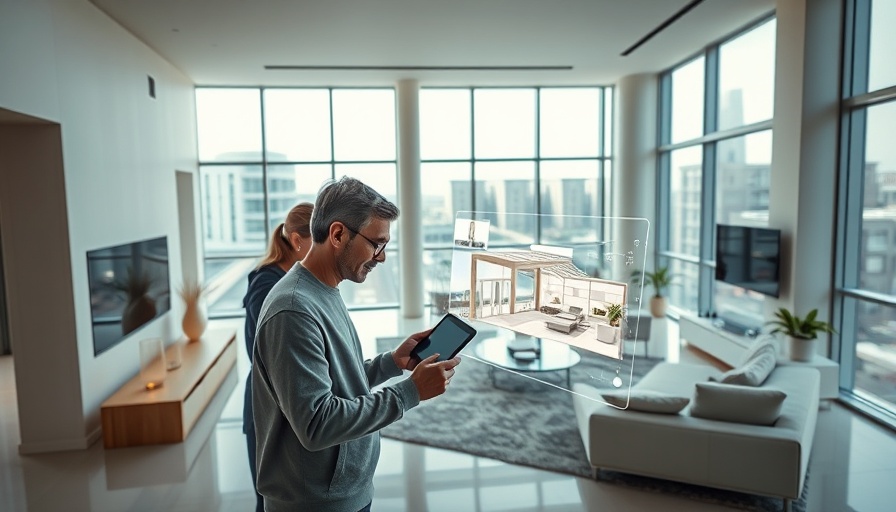
How Smart Technology is Transforming Interior Design
As technology continues to advance, the realm of interior design is experiencing a profound transformation. Homeowners are no longer just decorating their spaces—they are integrating smart technology that enhances comfort, convenience, and efficiency. In Connecticut and particularly in Fairfield County, homeowners are at the forefront of embracing these innovations, turning their homes into personalized havens of modern design.
Enhancing Interiors with Smart Home Automation
In Connecticut, smart home automation is leading a notable shift in interior design philosophy. Homeowners can now customize their living environments like never before, integrating devices that control lighting, temperature, and security—all through smart apps. This means that on a cold evening, the thermostat knows to warm up the house before you arrive home, ensuring you step into comfort. Voice-activated systems ensure that homeowners can control their environments without lifting a finger, making daily life smoother and more intuitive.
Immersive Experiences with VR and AR
For homeowners in Fairfield County considering renovations or new designs, virtual reality (VR) and augmented reality (AR) have become indispensable tools. These technologies allow them to visualize design changes before they happen. With AR apps, users can see how new furniture or layout changes will look in their actual living spaces, helping to eliminate guesswork and ensuring satisfaction with decisions long before implementation. This capability not only enhances engagement but also empowers homeowners to make confident design choices.
The Rise of AI in Interior Design
Artificial Intelligence (AI) is revolutionizing not just the organization of spaces but also the design outcomes. In Connecticut, AI-driven design tools analyze personal preferences and spatial dynamics to suggest optimal layouts and decor that suit the homeowner's lifestyle. For example, a pet owner could receive recommendations for durable and comfortable seating arrangements that meet both comfort and practicality. The ability for these technologies to learn and adapt ensures that homes continuously reflect the aesthetic and functional desires of their inhabitants.
Combining Style with Functionality
With smart technology taking center stage, aesthetic integration is more crucial than ever. Connecticut residents are finding that smart devices enhance rather than disrupt their home decor. Sleek smart speakers, stylish lighting that reacts to mood, and even invisible technology like smart TVs that blend with interior decor are becoming standard. The trick is to maintain a harmonious balance between high-tech features and personal style, which is key to modern interior design.
Building a Sustainable Future with Smart Technology
Many homeowners are becoming more eco-conscious, seeking solutions that reduce their carbon footprint while enhancing comfort. Energy-efficient smart devices are making sustainability more accessible. Smart meters track usage and adjust settings—like optimizing heating only when rooms are in use—leading to more environmentally responsible consumption. By investing in smart technology, Connecticut homeowners are ensuring that their homes not only feel good but also do good for the planet.
Conclusion: Embracing the Future of Interior Design
As we look to the future, the integration of smart technology in interior design is not merely a trend but a reimagining of our living environments. Connecticut homeowners have the unique opportunity to be pioneers in this exciting evolution, adopting innovations that cater to personal preferences while promoting efficiency, security, and sustainability. By leveraging technology, they are crafting homes that are not just stylish but also smart and adaptive—transforming both how they live and how they envision their spaces.
 Add Row
Add Row  Add
Add 




 Add Row
Add Row  Add
Add 

Write A Comment